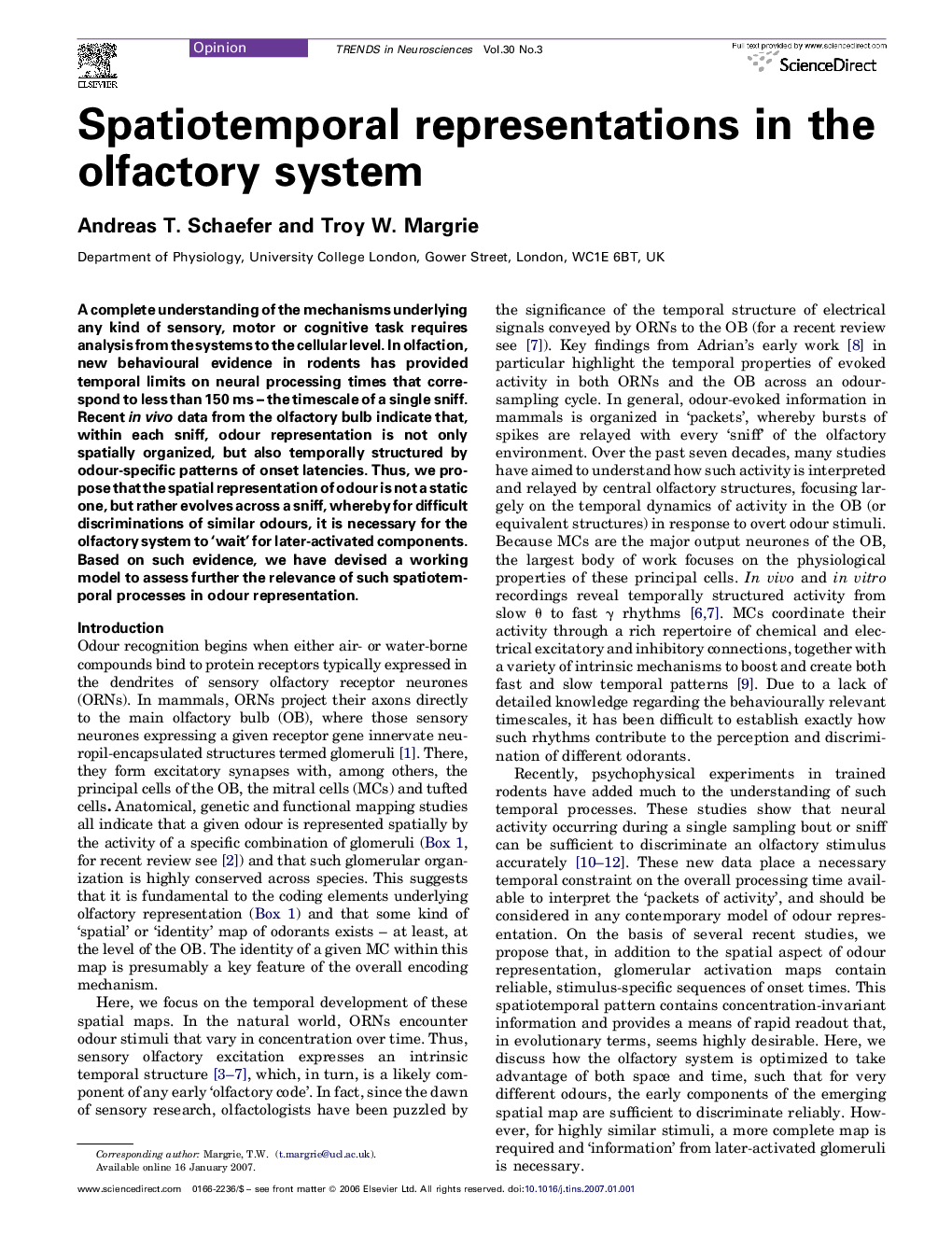| Article ID | Journal | Published Year | Pages | File Type |
|---|---|---|---|---|
| 4354896 | Trends in Neurosciences | 2007 | 9 Pages |
A complete understanding of the mechanisms underlying any kind of sensory, motor or cognitive task requires analysis from the systems to the cellular level. In olfaction, new behavioural evidence in rodents has provided temporal limits on neural processing times that correspond to less than 150 ms – the timescale of a single sniff. Recent in vivo data from the olfactory bulb indicate that, within each sniff, odour representation is not only spatially organized, but also temporally structured by odour-specific patterns of onset latencies. Thus, we propose that the spatial representation of odour is not a static one, but rather evolves across a sniff, whereby for difficult discriminations of similar odours, it is necessary for the olfactory system to ‘wait’ for later-activated components. Based on such evidence, we have devised a working model to assess further the relevance of such spatiotemporal processes in odour representation.
